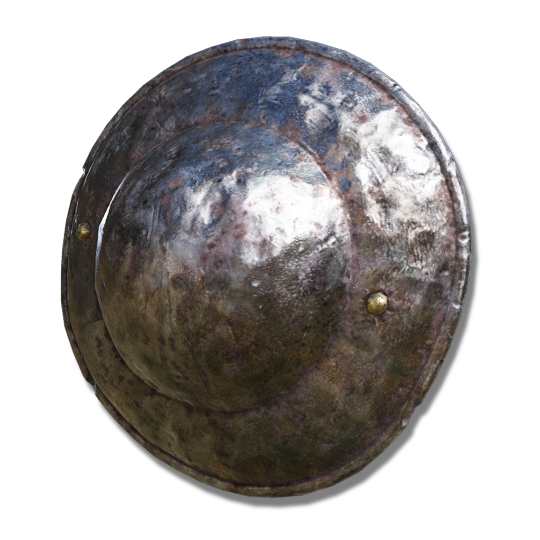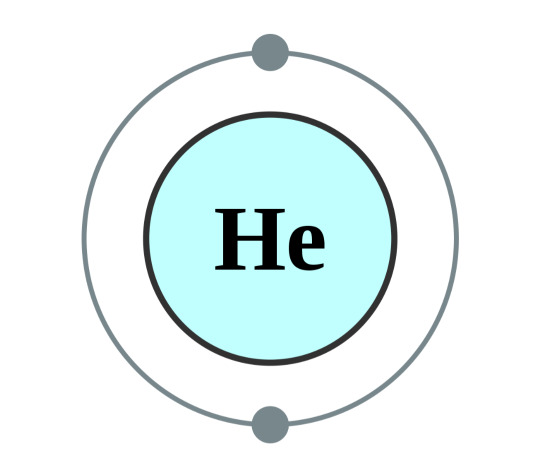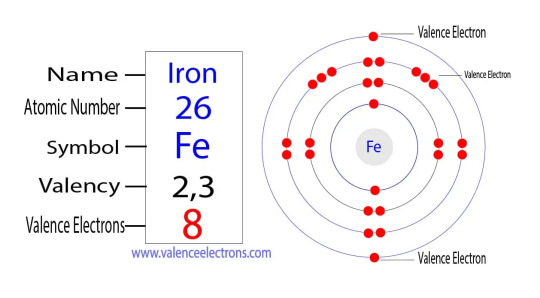#selenium classes
Explore tagged Tumblr posts
Text
help a few days ago i drew a mom and i think i accidentally made her a milf
#homegrown post#uhhhh should i tag this as my ocs or smth#eh if i end up posting her then i'll tag the reblog ig???#this might end up being the first post for my#homestuck#au ;<;#re: the whether i should tag this as my ocs or smth like that#this post actually doesn't contain her and also she's partly original but like she IS based off of pre-scratch Roxy/Mom Lalonde#but like she's still a different character y'know#uhhh fuck it ima tag this as the au#Selenium AU#AuSe#<- the abbreviation has the au part first as a chemistry pun because fuck it we ball#why am i acting so nervous about smth i might not end up posting#i should be CONFIDENT like HELL YEAH HERE IS THIS THING I MADE >:D#like when i took a photography class and the teacher said that we shouldn't put down our work and let other people judge for themselves-#-whether we did a good job or not and our job is to try to make others think it's good even if we don't think so#anyway the thoughts are rotating in my head and now the tags r a mess sorry ¯\_(ツ)_/¯
7 notes
·
View notes
Text
0 notes
Text
Four Types Of Data Science Technologies
0 notes
Text
https://www.yessinfotech.com/automation-testing-using-selenium-webdriver-java-apitesting/
classroom software training in pune
Yess Infotech is one of the best classroom software training in Pune which provide High-Quality Industry Level Training. With our development centres in Pune, India, we can leverage the low-cost advantage to provide customized cost-effective IT solutions for our clients across the globe. we Provide Best IT Training courses as well as 100% placement guarantee.
Read more@ https://www.yessinfotech.com/automation-testing-using-selenium-webdriver-java-apitesting/

#classroom software training in pune#classroom software training in hadapsar#python training institute in hadapsar#data science course hadapsar#software testing training institute in hadapsar#stock market training in pune#automation testing classes in hadapsar#selenium testing classes in hadapsar#software testing classes in hadapsar#salesforce training in pune
0 notes
Text
The polluted water leaching from four massive open-pit coal mines in southern B.C.’s Elk Valley is well documented — fish-killing selenium, sulphates and nitrates that travel downstream into international watersheds along the U.S. border. Add to those boundary-hopping hazards one more contaminant that is airborne. An Alberta study recently published in Environmental Science & Technology Letters highlights the transport of toxic coal dust downwind over the Rocky Mountains into southern Alberta’s watersheds and communities. The study, conducted by researchers with the Alberta government and University of Alberta, sampled blackened snowpacks three kilometres to 60 kilometres downwind of Teck Resources’ mine sites over two winter periods in 2022 and 2023. After melting the dirty snow and assessing its chemical composition, they found vast quantities of polycyclic aromatic compounds, or PACs, a toxic class of organic contaminants.
Continue Reading
Tagging: @newsfromstolenland, @abpoli
#environmentalism#coal mining#alberta#british columbia#cdnpoli#canadian politics#canadian news#canada
203 notes
·
View notes
Text
When you HAVE to say goodbye 💌

↟ ⋆ ❅↟ ⋆ ❅↟ ⋆ ❅↟ ⋆ ❅↟ ⋆ ❅↟ ⋆ ❅↟ ⋆ ❅↟ ⋆ ↟ ⋆ ❅↟ ⋆ ❅↟
Pick a meme
123



↟ ⋆ ❅↟ ⋆ ❅↟ ⋆ ❅↟ ⋆ ❅↟ ⋆ ❅↟ ⋆ ❅↟ ⋆ ❅↟ ⋆ ↟ ⋆ ❅↟ ⋆ ❅↟
Disclaimer: please take what I say with a grain of salt and not as the gospel. I just want to share some ideas of practicing and giving advice using the medium as often as I can with school, work, and my own personal studies and practice. But I am working on sharing my notes soon so that will be exciting! Liking and sharing does a lot 🥰
↟ ⋆ ❅↟ ⋆ ❅↟ ⋆ ❅↟ ⋆ ❅↟ ⋆ ❅↟ ⋆ ❅↟ ⋆ ❅↟ ⋆ ↟ ⋆ ❅↟ ⋆ ❅↟
Socials: My Socials ☾
↟ ⋆ ❅↟ ⋆ ❅↟ ⋆ ❅↟ ⋆ ❅↟ ⋆ ❅↟ ⋆ ❅↟ ⋆ ❅↟ ⋆ ↟ ⋆ ❅↟ ⋆ ❅↟
The cards

Nickel 💡
We are all but fleeting moments, people come, people go but the impact we make and that we give in those small moments is what makes it. What is a relationship but a culmination of small moments in a giant ocean of experience. I have to see a small moment leave especially when greeted with tenderness and love and understanding. But we must let go and accept new ones none the less.
Selenium 🧸
We take these small moments and connections as our nectar of life. Im literally the first to say I hate people but the loving connections I had and have add so much to the world around me, i love my friends, i love the people I barely know, I love the people I help in class even if they can be distracting and annoying. To accept a moment is to accept it all in its full entirety with open arms, some good some bad and all just in this world.
Yttrium 🏷️
How rare is it to be seen as not just a fraction if yourself but to be celebrated in your whole entirety and being. Such connections are sometimes short lived, sometimes soul mates in a nonromantic way who meet for a moment in time and then are ripped away back our own paths. Like fish in currents meeting for a small moment and seeing you before being taken away.
↟ ⋆ ❅↟ ⋆ ❅↟ ⋆ ❅↟ ⋆ ❅↟ ⋆ ❅↟ ⋆ ❅↟ ⋆ ❅↟ ⋆ ↟ ⋆ ❅↟ ⋆ ❅↟
Extras:
Story/vent:
I cried like a baby, my old coworker and dear friend is moving away and she was actually just the most sweet and beautiful woman I have ever met in my life. But I am so happy she hated Washington and I only want her to be happy.
↟ ⋆ ❅↟ ⋆ ❅↟ ⋆ ❅↟ ⋆ ❅↟ ⋆ ❅↟ ⋆ ❅↟ ⋆ ❅↟ ⋆ ↟ ⋆ ❅↟ ⋆ ❅↟
#suitlifeofgerm#askgerm#germ reads#daily card#tarot#pick a card#tarotoftheday#shadow work#pick a picture#tarot community#tarot blog#tarot witch#free tarot#tarot spread#daily tarot#tarot reading#tarot cards#tarot spreads#tarot reader#tarotcommunity#tarotblr#tarot deck#tarot pull#pac reading#tarot pac#tarot pick a card#tarot pick a pile#tarot draw#tarot divination#tarot daily
33 notes
·
View notes
Text
there are two types of anime power systems:
"i survived the fall because of the power of love! :3"
and
"Organometallic chemistry is the study of organometallic compounds, chemical compounds containing at least one chemical bond between a carbon atom of an organic molecule and a metal, including alkali, alkaline earth, and transition metals, and sometimes broadened to include metalloids like boron, silicon, and selenium, as well.[1][2] Aside from bonds to organyl fragments or molecules, bonds to 'inorganic' carbon, like carbon monoxide (metal carbonyls), cyanide, or carbide, are generally considered to be organometallic as well. Some related compounds such as transition metal hydrides and metal phosphine complexes are often included in discussions of organometallic compounds, though strictly speaking, they are not necessarily organometallic. The related but distinct term "metalorganic compound" refers to metal-containing compounds lacking direct metal-carbon bonds but which contain organic ligands. Metal β-diketonates, alkoxides, dialkylamides, and metal phosphine complexes are representative members of this class. The field of organometallic chemistry combines aspects of traditional inorganic and organic chemistry.[3]
Organometallic compounds are widely used both stoichiometrically in research and industrial chemical reactions, as well as in the role of catalysts to increase the rates of such reactions (e.g., as in uses of homogeneous catalysis), where target molecules include polymers, pharmaceuticals, and many other types of practical products.
Most organometallic compounds are solids at room temperature, however some are liquids such as methylcyclopentadienyl manganese tricarbonyl, or even volatile liquids such as nickel tetracarbonyl.[1] Many organometallic compounds are air sensitive (reactive towards oxygen and moisture), and thus they must be handled under an inert atmosphere.[1] Some organometallic compounds such as triethylaluminium are pyrophoric and will ignite on contact with air.[6]
As in other areas of chemistry, electron counting is useful for organizing organometallic chemistry. The 18-electron rule is helpful in predicting the stabilities of organometallic complexes, for example metal carbonyls and metal hydrides. The 18e rule has two representative electron counting models, ionic and neutral (also known as covalent) ligand models, respectively.[7] The hapticity of a metal-ligand complex, can influence the electron count.[7] Hapticity (η, lowercase Greek eta), describes the number of contiguous ligands coordinated to a metal.[7] For example, ferrocene, [(η5-C5H5)2Fe], has two cyclopentadienyl ligands giving a hapticity of 5, where all five carbon atoms of the C5H5 ligand bond equally and contribute one electron to the iron center. Ligands that bind non-contiguous atoms are denoted the Greek letter kappa, κ.[7] Chelating κ2-acetate is an example. The covalent bond classification method identifies three classes of ligands, X,L, and Z; which are based on the electron donating interactions of the ligand. Many organometallic compounds do not follow the 18e rule. The metal atoms in organometallic compounds are frequently described by their d electron count and oxidation state. These concepts can be used to help predict their reactivity and preferred geometry. Chemical bonding and reactivity in organometallic compounds is often discussed from the perspective of the isolobal principle.
A wide variety of physical techniques are used to determine the structure, composition, and properties of organometallic compounds. X-ray diffraction is a particularly important technique that can locate the positions of atoms within a solid compound, providing a detailed description of its structure.[1][8] Other techniques like infrared spectroscopy and nuclear magnetic resonance spectroscopy are also frequently used to obtain information on the structure and bonding of organometallic compounds.[1][8] Ultraviolet-visible spectroscopy is a common technique used to obtain information on the electronic structure of organometallic compounds. It is also used monitor the progress of organometallic reactions, as well as determine their kinetics.[8] The dynamics of organometallic compounds can be studied using dynamic NMR spectroscopy.[1] Other notable techniques include X-ray absorption spectroscopy,[9] electron paramagnetic resonance spectroscopy, and elemental analysis.[1][8]
Due to their high reactivity towards oxygen and moisture, organometallic compounds often must be handled using air-free techniques. Air-free handling of organometallic compounds typically requires the use of laboratory apparatuses such as a glovebox or Schlenk line.[1]
Early developments in organometallic chemistry include Louis Claude Cadet's synthesis of methyl arsenic compounds related to cacodyl, William Christopher Zeise's[10] platinum-ethylene complex,[11] Edward Frankland's discovery of diethyl- and dimethylzinc, Ludwig Mond's discovery of Ni(CO)4,[1] and Victor Grignard's organomagnesium compounds. (Although not always acknowledged as an organometallic compound, Prussian blue, a mixed-valence iron-cyanide complex, was first prepared in 1706 by paint maker Johann Jacob Diesbach as the first coordination polymer and synthetic material containing a metal-carbon bond.[12]) The abundant and diverse products from coal and petroleum led to Ziegler–Natta, Fischer–Tropsch, hydroformylation catalysis which employ CO, H2, and alkenes as feedstocks and ligands.
Recognition of organometallic chemistry as a distinct subfield culminated in the Nobel Prizes to Ernst Fischer and Geoffrey Wilkinson for work on metallocenes. In 2005, Yves Chauvin, Robert H. Grubbs and Richard R. Schrock shared the Nobel Prize for metal-catalyzed olefin metathesis.[13]
Organometallic chemistry timeline
edit
1760 Louis Claude Cadet de Gassicourt isolates the organoarsenic compound cacodyl
1827 William Christopher Zeise produces Zeise's salt; the first platinum / olefin complex
1848 Edward Frankland discovers diethylzinc
1890 Ludwig Mond discovers nickel carbonyl
1899 John Ulric Nef discovers alkynylation using sodium acetylides.
1909 Paul Ehrlich introduces Salvarsan for the treatment of syphilis, an early arsenic based organometallic compound
1912 Nobel Prize Victor Grignard and Paul Sabatier
1930 Henry Gilman invents lithium cuprates, see Gilman reagent
1940 Eugene G. Rochow and Richard Müller discover the direct process for preparing organosilicon compounds
1930's and 1940's Otto Roelen and Walter Reppe develop metal-catalyzed hydroformylation and acetylene chemistry
1951 Walter Hieber was awarded the Alfred Stock prize for his work with metal carbonyl chemistry.
1951 Ferrocene is discovered
1956 Dorothy Crawfoot Hodgkin determines the structure of vitamin B12, the first biomolecule found to contain a metal-carbon bond, see bioorganometallic chemistry
1963 Nobel prize for Karl Ziegler and Giulio Natta on Ziegler–Natta catalyst
1973 Nobel prize Geoffrey Wilkinson and Ernst Otto Fischer on sandwich compounds
1981 Nobel prize Roald Hoffmann and Kenichi Fukui for creation of the Woodward-Hoffman Rules
2001 Nobel prize W. S. Knowles, R. Noyori and Karl Barry Sharpless for asymmetric hydrogenation
2005 Nobel prize Yves Chauvin, Robert Grubbs, and Richard Schrock on metal-catalyzed alkene metathesis
2010 Nobel prize Richard F. Heck, Ei-ichi Negishi, Akira Suzuki for palladium catalyzed cross coupling reactions
Subspecialty areas of organometallic chemistry include:
Period 2 elements: organolithium chemistry, organoberyllium chemistry, organoborane chemistry
Period 3 elements: organosodium chemistry, organomagnesium chemistry, organoaluminium chemistry, organosilicon chemistry
Period 4 elements: organocalcium chemistry, organoscandium chemistry, organotitanium chemistry, organovanadium chemistry, organochromium chemistry, organomanganese chemistry, organoiron chemistry, organocobalt chemistry, organonickel chemistry, organocopper chemistry, organozinc chemistry, organogallium chemistry, organogermanium chemistry, organoarsenic chemistry, organoselenium chemistry
Period 5 elements: organoyttrium chemistry, organozirconium chemistry, organoniobium chemistry, organomolybdenum chemistry, organotechnetium chemistry, organoruthenium chemistry, organorhodium chemistry, organopalladium chemistry, organosilver chemistry, organocadmium chemistry, organoindium chemistry, organotin chemistry, organoantimony chemistry, organotellurium chemistry
Period 6 elements: organolanthanide chemistry, organocerium chemistry, organotantalum chemistry, organotungsten chemistry, organorhenium chemistry, organoosmium chemistry, organoiridium chemistry, organoplatinum chemistry, organogold chemistry, organomercury chemistry, organothallium chemistry, organolead chemistry, organobismuth chemistry, organopolonium chemistry
Period 7 elements: organoactinide chemistry, organothorium chemistry, organouranium chemistry, organoneptunium chemistry
Organometallic compounds find wide use in commercial reactions, both as homogenous catalysts and as stoichiometric reagents. For instance, organolithium, organomagnesium, and organoaluminium compounds, examples of which are highly basic and highly reducing, are useful stoichiometrically but also catalyze many polymerization reactions.[14]
Almost all processes involving carbon monoxide rely on catalysts, notable examples being described as carbonylations.[15] The production of acetic acid from methanol and carbon monoxide is catalyzed via metal carbonyl complexes in the Monsanto process and Cativa process. Most synthetic aldehydes are produced via hydroformylation. The bulk of the synthetic alcohols, at least those larger than ethanol, are produced by hydrogenation of hydroformylation-derived aldehydes. Similarly, the Wacker process is used in the oxidation of ethylene to acetaldehyde.[16]
Almost all industrial processes involving alkene-derived polymers rely on organometallic catalysts. The world's polyethylene and polypropylene are produced via both heterogeneously via Ziegler–Natta catalysis and homogeneously, e.g., via constrained geometry catalysts.[17]
Most processes involving hydrogen rely on metal-based catalysts. Whereas bulk hydrogenations (e.g., margarine production) rely on heterogeneous catalysts, for the production of fine chemicals such hydrogenations rely on soluble (homogenous) organometallic complexes or involve organometallic intermediates.[18] Organometallic complexes allow these hydrogenations to be effected asymmetrically.
Many semiconductors are produced from trimethylgallium, trimethylindium, trimethylaluminium, and trimethylantimony. These volatile compounds are decomposed along with ammonia, arsine, phosphine and related hydrides on a heated substrate via metalorganic vapor phase epitaxy (MOVPE) process in the production of light-emitting diodes (LEDs).
Organometallic compounds undergo several important reactions:
associative and dissociative substitution
oxidative addition and reductive elimination
transmetalation
migratory insertion
β-hydride elimination
electron transfer
carbon-hydrogen bond activation
carbometalation
hydrometalation
cyclometalation
nucleophilic abstraction
The synthesis of many organic molecules are facilitated by organometallic complexes. Sigma-bond metathesis is a synthetic method for forming new carbon-carbon sigma bonds. Sigma-bond metathesis is typically used with early transition-metal complexes that are in their highest oxidation state.[19] Using transition-metals that are in their highest oxidation state prevents other reactions from occurring, such as oxidative addition. In addition to sigma-bond metathesis, olefin metathesis is used to synthesize various carbon-carbon pi bonds. Neither sigma-bond metathesis or olefin metathesis change the oxidation state of the metal.[20][21] Many other methods are used to form new carbon-carbon bonds, including beta-hydride elimination and insertion reactions.
Organometallic complexes are commonly used in catalysis. Major industrial processes include hydrogenation, hydrosilylation, hydrocyanation, olefin metathesis, alkene polymerization, alkene oligomerization, hydrocarboxylation, methanol carbonylation, and hydroformylation.[16] Organometallic intermediates are also invoked in many heterogeneous catalysis processes, analogous to those listed above. Additionally, organometallic intermediates are assumed for Fischer–Tropsch process.
Organometallic complexes are commonly used in small-scale fine chemical synthesis as well, especially in cross-coupling reactions[22] that form carbon-carbon bonds, e.g. Suzuki-Miyaura coupling,[23] Buchwald-Hartwig amination for producing aryl amines from aryl halides,[24] and Sonogashira coupling, etc.
Natural and contaminant organometallic compounds are found in the environment. Some that are remnants of human use, such as organolead and organomercury compounds, are toxicity hazards. Tetraethyllead was prepared for use as a gasoline additive but has fallen into disuse because of lead's toxicity. Its replacements are other organometallic compounds, such as ferrocene and methylcyclopentadienyl manganese tricarbonyl (MMT).[25] The organoarsenic compound roxarsone is a controversial animal feed additive. In 2006, approximately one million kilograms of it were produced in the U.S alone.[26] Organotin compounds were once widely used in anti-fouling paints but have since been banned due to environmental concerns.[27]"
#these are not mutually exclusive#anime#animanga#anime and manga#anime & manga#shounen anime#shonen anime#shonen#shounen manga#shonen manga#shoujo anime#shoujo manga#shojo#shoujo#shounen#mahou shoujo#shojo manga#shojo anime#magic system#hard magic#soft magic
7 notes
·
View notes
Note
Listen I feel so ugly all the time I'm trying to get myself better but it seems like every time I do something comes up and knocks me down to the point where I just quit and it pisses me off. Recently I started to use my journal more to write down stuff to better myself I write down quotes of the month, and listen to podcasts at work sometimes. But after work, I'm so tired I work from 8AM-4PM I don't have the energy to do anything especially working out and that's my biggest issue and it hurts me to the core that I'm this way. Do you have any tips to help me? Please cause I need it bad.
Hey sweetie, okay some ideas...
What is it you don't love about yourself ? What is that makes you feel ugly? Are these things you can accept or want to change? If you can't accept things you don't like about yourself, then honestly I would start thinking about making some changes. What is within your power to change? What would make you feel beautiful? Is it your teeth? Start saving for the Invisalign or teeth whitening strips, is it your thin hair, look into new hairstyles, weaves, extensions.. If it's your face shape that you really can't make peace with maybe its worth getting some fillers. And while I don't want to promote these things, in my personal experience I have felt happier when I've invested in my image. I had 11's between my eyebrows and after so long of trying to accept these lines in my head I got botox and I was the happiest. So go invest in you, if you can't afford it do what you can, save up & research online. Invest in your image. I've seen friends feel so unaccepting of how they look for years, putting themselves down because of early wrinkles, bad teeth - when all it would take is some investments. So choose you. This is your one life, do you want to spend it feeling ugly and second class every time you look in the mirror? Or do you want to invest in looking and feeling your best?
On the low energy - I would assess your diet. What are you eating, drinking? This will be a huge factor. Carbs - the devil in my opinion. I spent a vast majority of my life in carb crashing and hunger and needing more sugar / food DESPITE thinking I was eating and drinking healthily. Now I am studying nutrition, I am learning how detrimental my diet was to my overall health. So I would advise, protein and greens diet. Cut sugar, in the form of carbs/ starchy vegetables, replace chocolates / crisps with nuts and fruits. Drink more water, invest in some celtic salts, supplements (vitamin D + k2, vitamin c, DIM, selenium, magnesium - ensure there on no nasties inside bulking agents), grass fed meats, organic veggies, salads, bone broths weekly.
I would also make sure you are doing exercise. It needs to be sweat inducing. A run down the road and back to start with if you're unfit. You don't need a fancy gym. Take a cold shower when you get home (you can start with a hot temp and then do 30-60 seconds cold to build yourself up). Do some stretches, make an effort, as simple as while the kettle boils, make this an opportunity to touch your toes or rotate your hips.
These are some starting points. I would begin the latter first, get your energy and body right initially and then start putting money and investments into your image. Health is wealth, so while you may or may not feel beautiful, without investing in great health you will ultimately struggle.
I hope this helps. DM is open if you have more questions/ need more support xoxo
#manifestyourreality#levelupjourney#levelup#lawofattraction#levelup confidence lawofattraction powerofthemind#growthmindset#manifesting#manifestingmindset#manifest#confident
24 notes
·
View notes
Text
does anyone else have paranoia everything is a scam?
obv yall know im a gym girlie. ive had opportunities to work with trainers. in 2018 I did crossfit and worked with a trainer and I was in the best health of my life and I liked how I looked. it was expensive but I did it. I have an opportunity rn to do something similar, but my mind is like "IT'S A SCAM" even though it definitely isn't. and I've felt like that with all the options my gym has. classes? no that's a scam. one on one training? scam.
I think the same thing about supplements. I'll research things and then be like mmmmm idk I think that's a scam. (ex: benefits of taking selenium for my thyroid...somehow in my mind, despite the research and being able to choose my own supplement brand, it's a scam...like???¿¿¿¿????)
even skincare or hair products. I will deadass do research on a certain product/ingredient for a concern and then decide not to buy it bc my mind is like "no that won't work that's a scam somehow"
like why do I have such paranoia around being duped constantly I don't get it!!!!!
12 notes
·
View notes
Text
Selenium classes online
Enhance your testing skills with flexible and interactive learning options. Selenium classes online provide comprehensive training on automation frameworks, WebDriver, and test execution. These classes offer practical exercises and expert guidance, making them perfect for beginners and professionals alike who want to excel in web application testing and boost their career prospects.
0 notes
Text
5 Random Sci-fi Commodities
Stealth siphon
Optical neodymium re-sequencer (Class E) Caution: oxidizing
Static muon valve (Mark X) Warning: oxidizing
Mark VII bio-degradable selenium re-distributor
Anti-fungal coodinator (Mark X)
2 notes
·
View notes
Text
#software testing training in pune#software testing courses in pune#best software testing institute in pune#software testing course with job guarantee#software testing classes in pune#software testing course online#software testing course near me#software testing training and placement#automation testing course with placement#selenium automation testing courses#software training institute in Pune
0 notes
Text
Selenium Certification in Pune – What Should You Know About It?
As an open source tool, Selenium is extensively used to test web applications. Its usage makes web application testing automated. Young students with a passion for information technology prefer to make their career in testing web applications. If you are among them, you should enroll yourself in testing courses in Pune or your locality. Selenium certification in Pune is one of those courses.
0 notes
Text
software testing classes in hadapsar
Are you searching for the best career-oriented classes in Pune?we are the best software testing classes in hadapsar with 100 % placement guarantee. We provide all IT Training for freshers as well as for working professionals. We are having the best trainers who provides practical job oriented training.
Read more@ https://www.yessinfotech.com/automation-testing-using-selenium-webdriver-python/
#software testing classes in hadapsar#classroom software training in hadapsar#python training institute in hadapsar#data science course hadapsar#software testing training institute in hadapsar#stock market training in pune#automation testing classes in hadapsar#selenium testing classes in hadapsar#classroom software training in pune#salesforce training in pune
0 notes
Text
The properties that make materials like semiconductors so sought after result from the way their atoms are connected, and insight into these atomic configurations can help scientists design new materials or use existing materials in new, unforeseen ways. Rice University materials scientist Yimo Han and collaborators mapped out the structural features of a 2D ferroelectric material made of tin and selenium atoms, showing how domains -- areas of the material in which molecules are identically oriented -- impact the behavior of the material. "Ferroelectric materials are widely used in applications such as memories and sensors, and they will likely be increasingly useful for building next-generation nanoelectronics and in-memory computing," said Chuqiao Shi, a Rice graduate student in the Han lab and lead author on a study published in Nature Communications. "That's because 2D ferroelectric materials have remarkable properties and are characterized by their atomic thinness and enhanced integration capabilities."
Read more.
9 notes
·
View notes
Text
Elden Ring Elemental Allegory Hypothesis
So there's a question that has been on my mind for a while: does this Buckler shield look like a Helium atom?


There is an episode of Stargate SG-1 called "The Torment of Tantalus". A researcher named Ernest Littlefield has been stranded alone on a alien planet for over 50 years since 1945. The planet was called Heliopolis and was at one point the centre of power for Ra - a parasitic snake-like alien that lived inside a human host and presented himself as a god to the people of Earth. But long before this the planet was once the meeting place of 4 alien groups who communicated using the universal language - atoms.
I think it possible that one of the more subtle layers of Elden Ring is in using references to the periodic table of the elements to fill in some gaps in knowledge.
Summation of Sets - counting Rivets and Gemstones
For reasons that will become apparent later, the Buckler Shield is actually not the best example to start with because it is too generic and represents a few too many possibilities. Two better examples would be the Riveted Shield and Moon of Nokstella as both examples could be construed as referencing the moon (Selene):


Riveted Wooden Shield: Outer ring: 12 electrons - magnesium (Mg) Inner detail: 22 electrons - titanium (Ti) Combined: 34 electrons - selenium (Se)
Moon of Nokstella: Ring of small gems: 34 electrons - selenium (Se) Gems in settings: 4 electrons - beryllium (Be) Combined: 38 electrons - strontium (Sr)
I had an entire other post breaking down the elements of the Moon of Nokstella. But here I will run through the Riveted Wooden Shield.
The Riveted Wooden Shield is starting equipment for the Warrior class and the image upon it is of a sword and tree. The most likely reading of this is that the "tree" is represented as a conifer above ground and it's root system below ground, and the sword bisects these horizontally. The odd curvature of lines above and below the sword tip suggests also that the sword pierces a round object - perhaps an eye or full moon. The aesthetic of the Warrior implies a connection with the Blind Swordsman who long ago sealed the God of Rot, and indeed the head piece of this set covers and blinds the right eye (from the vantage of someone looking at the character). The right eye is associated with the eye of Horus and the moon in contrast to the left eye being the eye of Ra and the sun.



Magnesium, Titanium, and Selenium are all elements with connection to Greece. Selenium is named for Selene, the Ancient Greek word for the moon. Being the synthesis of inner and outer rivets this indicates the end product of the Blue Dancer/Blind Swordsman's actions - creation of a moon. As discussed further with the Moon of Nokstella, I believe this to be creation of the black moon or dark moon as selenium is a dark silvery metal.
Titanium is named similarly for the Greek Titans. The Titans were the pre-Olympian gods such as Gaia (earth), her son and husband Uranus (sky), their 6 male children, and 6 female children. The most well know titan is Cronus, the leader of the Titans who castrated and overthrew his father Uranus to become the god associated with the sky and the planet Saturn. The eldest of the Olympians are offspring of Cronus and Rhea: Hestia (Vesta - Virgin goddess of the hearth), Demeter (Ceres/Isis), Hera (Juno), Poseidon (Neptune), and Zeus (Jupiter). Some other Titans of note are the titan Hyperion and titaness Theia whose offspring were Helios (sun), Selene (moon) and Eos (dawn). And also Iapetus, father of the Titans Atlas (who holds up the celestial spheres (stars) on his shoulders) and Prometheus (who brought fire to man).
The name of elemental magnesium "comes from Magnesia, a district of Thessaly (Greece) where the mineral magnesia alba was first found". The word "magnet" has a similar origin as natural lodestones were also found in Magnesia. In the 1st or 2nd century BC there was an astronomer and thaumaturge named Aglaonice of Thessaly who was best known as a sorceress able to 'make the moon disappear from the sky'. It is the speculation of modern astronomers that this means that she could predict the general timeframe when a lunar eclipse would occur.

"Plutarch wrote that she was "thoroughly acquainted with the periods of the full moon when it is subject to eclipse, and, knowing beforehand the time when the moon was due to be overtaken by the earth's shadow, imposed upon the women, and made them all believe that she was drawing down the moon." Peter Bicknell notes that in most lunar eclipses the Moon does not disappear completely, but simply takes on a reddish hue. The ancient sources which discuss Aglaonice do not describe such a change of colour and there is no suggestion that she failed to convince observers that she was able to draw down the Moon. Bicknell speculates that in the first and second centuries BC there was a period in which the Moon appeared significantly less bright during the lunar eclipse due to variations in solar activity, and this might explain this apparent inconsistency." - Wikipedia article on Aglaonice
Overall, the point is that the shield can be read as indicating a time when the old Titans were supplanted by their offspring and thrown under the earth. This coincided with the old concept of the moon being replaced with a new one, which may be characterized as a lunar eclipse. Note that the landscape of the Lands Between is built upon the bodies of giants, and those giants are of a size to operate the Giant's Forge. And in agreement with the ancient mythic nature of this reading the Warrior is the oldest of all Tarnished - as the selection screen indicates "they were all warriors once".
Speculation on the Buckler Shield
Helium (He) would actually tie in quite nicely with the themes of Elden Ring. Its name is derived from "Helios" the Greek god of the sun, as the element was first observed via 7-prism electromagnetic spectroscopy instruments aimed at the sun. The first recorded observation of helium occurred during an eclipse on 18 August 1868 (also called "The King of Siam's Eclipse") by French astronomer Pierre Jules César Janssen. But it was not identified as a new element until a second astronomer - Norman Lokyer - observed the same spectral reading from England in October 1868 and confirmed the discovery with the help of chemist Edward Frankland.

Helium is the only element to have been first discovered in outer space before being found on earth and is very abundant in both the sun and the planet Jupiter in our solar system. It was later found on earth and isolated by chemist William Ramsay in 1895. Ramsay was also known for discovering Neon, Argon, Krypton and Xenon, and for isolating and characterizing Radon in 1910. Helium has many industrial applications such as the cooling of superconducting magnets, arc welding, growing crystals for silicon wafers and as a safer gas for lifting airships than the flammable hydrogen gas. It is generated through alpha particle decay of radioactive elements.
Buckler
A small metal roundshield. The bump in the center enables parrying techniques. A well-timed parry can break an enemy's stance, allowing a critical hit. Best suited for those prepared to take the risk to reap their reward.
The Buckler is starting equipment for the bandit class, or sold by Gatekeeper Gostoc. And based on this available information there is nothing that immediately stands out as relating to the shield being connected to helium. Although helium does have a fairly stable nucleus relative to its neighbours hydrogen and lithium, it is not what it is known for, and it is certainly not a metal. The description of the bump in the centre enabling parrying brings to mind the way that the nuclei of atoms will prefer to repel each other, thus performing nuclear fusion requires particles to be accelerated towards each other at very high speeds. Californium and Berkelium have been produced by bombarding Curium with alpha particles, Mendelevium is produced by bombarding Einsteinium with alpha particles.
There is a secondary explanation that fits - which is actually the first one that I had thought of. There is a theme in Elden Ring of shells. Turtles have shells that are symbolic of protecting secrets, snakes have shells (which don't match their species), the sorcerers have trays of shells sitting in their rises. One of the successful models of the atom is to arrange the electrons in shells, where the valence electrons in the outermost shell are available for bonding. It was coincidentally Edward Frankland again who introduced the concept of valence in the same year as the discovery of helium.


The Buckler is made of an unspecified metal, and as it happens there are many elements which are found with 2 valence electrons in their outer shell. These include Zinc (Zn), Iron (Fe), Nickel (Ni), Cobalt (Co), Yttrium (Y), Vanadium (V), Scandium (Sc), Technetium (Tc), Cadmium (Cd), Lutetium (Lu), Hafnium (Hf), Tantalum (Ta), Tungsten (W), Rhenium (Re), Osmium (Os), Iridium (Ir), Mercury (Hg). As well as the entire alkaline earth metal group of Beryllium (Be), Magnesium (Mg), Calcium (Ca), Strontium (Sr), Barium (Ba), and Radium (Ra). Whittled down the periodic table to a mere 23 or so entries of interest - not bad! And at least 10 of these (in bold) were already thought by me to be elements of interest.
And by the traces of rust on the shield the "metal" in question could be simply iron. Iron has two electrons in the outer shell and is the heaviest element produced by the sun with nuclear fusion. Iron represents a transition point - for lighter elements energy is produced by nuclear fusion and for heavier elements energy is produced by nuclear fission. Although the Earth's core is largely composed of iron, most available elemental iron in the earth's crust originated from meteorites.

This post is just an introduction to the kinds of things that I'm thinking about, really. Assuming the convention that rivets represent electrons there are so many other shields to sift through and cross reference with the other known information to confirm a real pattern. Other possible elemental references I have noticed: the variety of flame colours found in game being reminiscent of the colours produced in burning metals for flame tests; characters whose names or story themes represent mythological figures who have elements named for them; characters whose names contain a syllable that is a standard abbreviation for an element; and known types of metals incorporated in descriptions and visuals like gold, silver, copper, bronze, brass, iron, steel, etc.
And also, the buckler shield may be present in Elden Ring but it originated at least as early as Dark Souls. So that begs the question of how long ago could FromSoft have started playing with elemental metaphor go that uses the true atomic elements of the periodic table as inspiration lurking beneath an alchemical framing device.
#elden ring#media analysis#I was working on another post about the elemental allegory but it got to some depressing places in real world history#Also absolutely wild pull that the man who first observed Helium was named for Julius Caesar considering the other Caesar references#Radon is very interesting too - I forgot about the brachytherapy application#and regarding Stargate SG-1 it was also on my mind that the “Ori” is a faction of false gods themed around Christianity (i.e. Oridys Rise)
4 notes
·
View notes